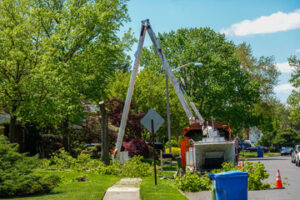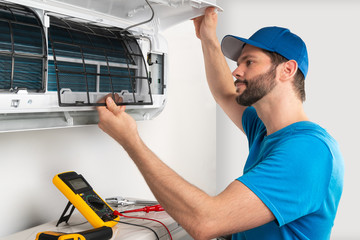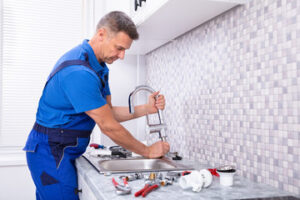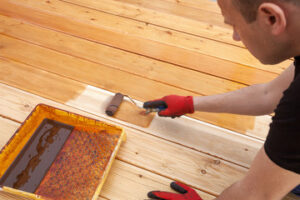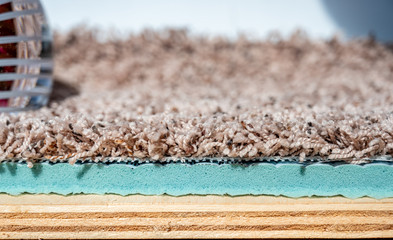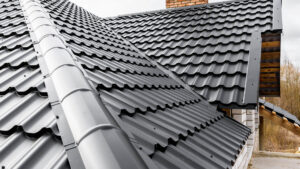Perth Insulation Removal is an essential home improvement project that can improve comfort and energy efficiency. However, it’s also a messy task that requires proper preparation and safety precautions.
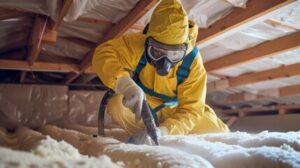
Investing in the right tools and procedures can make it easier to manage insulation removal. A stud finder, utility knife, long-handled vacuum, and sealed bags will minimize damage to wall structure.
Insulation removal is a detailed procedure that enhances your home’s energy efficiency and safety. Professionals identify existing insulation in your attic and walls to assess damage, contamination, and performance problems that could necessitate its replacement.
Visible signs of deterioration or damage indicate that your insulation needs to be replaced. If it’s wet, moldy, or contaminated with pest feces and urine, you should consider replacing it immediately. This type of damage compromises the insulating capacity of the material and increases your risk for a health issue or a costly home repair.
An increase in the amount of time it takes to heat or cool your home can also point to issues with your attic’s insulation. Inadequate insulating materials can overwork heating and cooling systems, raising your energy bills. The solution is to have professional contractors remove and replace your old insulation with new, high-performance materials that are energy-efficient and cost-effective.
In addition to addressing inefficiencies, the removal process helps prevent pest infestations by eliminating rodents’ nesting grounds and reducing their attraction to your home. Additionally, infested insulation can be contaminated with hazardous materials such as asbestos or vermiculite containing asbestos and must be removed according to local regulations.
Before a professional begins the removal process, they must clear out attic space and move personal belongings to create a safe working environment. Infested insulation often clings to personal items, which can result in damage during removal and disposal. This is why it’s important to have a pre-determined plan before beginning the removal process.
It’s also important to identify the type of insulation you have in your attic, as different types require specialized removal methods and safety precautions. For example, fiberglass batts will release particles when disturbed, requiring protective equipment for those involved in the removal process. Loose-fill and spray foam insulation are more easily removed with a vacuum and may not require the use of any special tools. Having this information available beforehand makes the removal process more efficient and ensures that your property’s unique safety needs are addressed. Developing a comprehensive removal plan enables professionals to complete the task quickly and efficiently.
Preparation
Insulation replacement is a detailed process that improves your home’s energy efficiency and safety. Having your old insulation removed and replaced will not only save on your energy bills, but it can also raise the resale value of your home for potential buyers who are environmentally conscious. There are several signs that indicate your insulation may need replacing, such as inconsistent indoor temperatures, high utility bills, and pests or rodents. It is best to contact a professional to perform a thorough assessment and inspection and determine the optimal solution for your situation.
Professionals have a systematic approach to insulation removal and replacement that will ensure safety and effectiveness. The first step involves identifying the type of insulation installed in your home. Different types of insulation are used for different purposes and require unique techniques to remove.
For example, blown-in insulation (such as fiberglass or cellulose) is usually easier to remove than spray foam insulation, which requires more extensive preparation and use of power tools. Before beginning the removal process, it is important to prepare the work area by establishing an organized workspace and securing access points. It is also essential to properly ventilate the space by opening windows and using fans, especially in humid regions where moisture problems are common. This helps reduce the concentration of airborne contaminants during the removal process.
Once the workspace is established, you will want to set up your equipment. This includes a commercial or HEPA-filtered shop vac, a rake, and sealed bags for disposal of the waste materials. You should also wear protective clothing such as gloves, safety goggles, and a dust mask to protect yourself from potential allergens or irritants. It is also recommended to take breaks frequently, especially when working in hot conditions, as heat exhaustion can lead to a dangerous work environment.
Once the workspace is prepared, the professionals can begin removing the insulation with a vacuum or by hand. In the case of a vacuum, the specialized equipment will effectively suck out loose fill insulation such as cellulose and fiberglass, which is faster and more efficient than manual removal. In the case of batt insulation, a utility knife is typically required to cut the material into more manageable sections.
Removal
Insulation removal is a detailed process that involves a lot of equipment and careful cleaning. It also requires extensive safety measures to prevent contamination and health issues. Professionals know all the tricks to make this process efficient, and they have the equipment and tools needed for the job. They can help ensure that the old insulation is removed properly and that the new material is installed correctly.
The first step is to identify the type of insulation that needs to be removed. This is important because different types of insulation require different removal methods and safety precautions. For example, cellulose insulation that is found in older homes can contain asbestos, which poses serious health risks for homeowners. It is also possible for fiberglass insulation to release dangerous particles into the air that can cause eye and lung irritation. During the identification phase, professionals will wear personal protective equipment such as a respirator mask, goggles, and disposable coveralls to protect themselves from harmful materials.
Once the professional has identified the type of insulation that is present in the home, he or she will prepare the attic area for the removal process. This will involve removing any furniture and laying down plastic sheeting to keep the area clean and safe during the removal process. Typically, the attic will need to be cleared of any electrical wires so that they do not get damaged during the removal process. This will also reduce the risk of fire hazards.
During the insulation removal process, the professional will seal off the work area to prevent contaminants from spreading to other areas of the house. He or she will also turn off the power to the attic space and disconnect any live wires. This will minimize the risk of injury to workers, prevent fire hazards, and protect electrical systems in the home.
Once the insulation is removed, it will be cleaned and disposed of properly. This will include sealing off any gaps that may allow moisture to enter the home, preventing pests from entering the space, and ensuring that the area is free of any dead animals that have been left behind. The insulation will then be replaced with new, more effective material, boosting the home’s energy efficiency and lowering utility bills.
Disposal
Insulation removal is a complicated process that requires specialized equipment and knowledge of safety and environmental regulations. It can be dangerous for homeowners to attempt DIY, particularly if they’re dealing with an older home that might contain asbestos or other contaminants. This is why it’s important to find professionals with experience handling insulation removal and installation projects. They’ll know the proper methods for removing and disposing of old insulation safely.
Before insulation can be removed, it must be thoroughly inspected to identify any damage or contamination. Once this is done, the professional will determine the best course of action for removal and replacement. They may recommend a vacuuming or manual removal technique to remove the insulation material. Vacuuming involves using specialized equipment to suck out loose-fill insulation like fiberglass or batt insulation. This method is much faster than manual removal, and it helps to minimize dust and debris throughout the rest of the home. Manual removal, on the other hand, might be necessary for more contaminated or difficult to reach areas.
Depending on the type of insulation, it might be possible to recycle it. This will help reduce the amount of harmful materials that end up in landfills and the environment. The best insulation materials to recycle are fiberglass and cellulose. Spray foam is also an option, but it must be disposed of properly to avoid health risks.
When evaluating options for insulation removal and disposal, it’s essential to consider the health and safety of your family and pets. Older insulation materials, especially cellulose, can contain dangerous carcinogens. These materials can also cause skin, eye, and lung irritation when they are handled or inhaled. It’s important to wear protective gloves and a mask during insulation removal, and to keep kids and pets away from the area until it’s completely safe.
In addition, you should never place insulation waste in your home trash cans. It’s vital to choose a trusted and responsible dumpster rental company, such as Vine Disposal, to handle the disposal of this waste. They’ll be able to provide the right size container for the job and ensure that it’s disposed of in accordance with local and state regulations.


